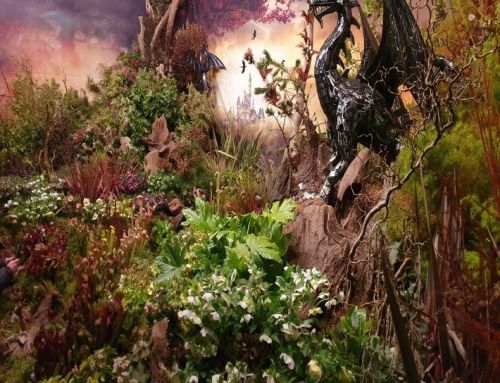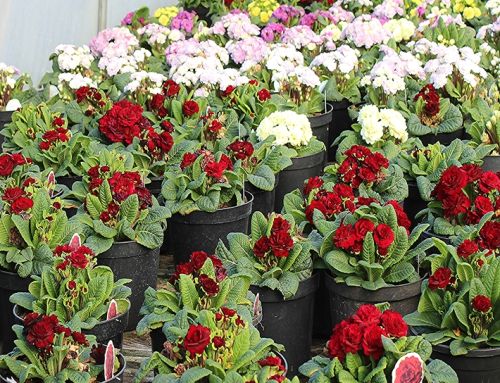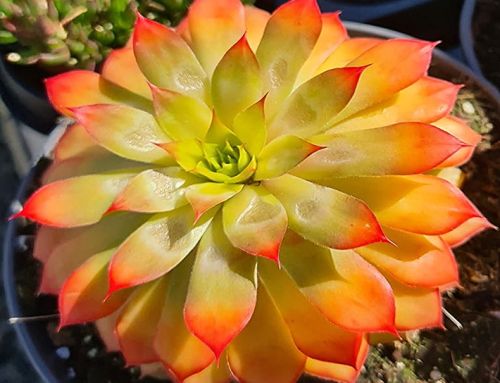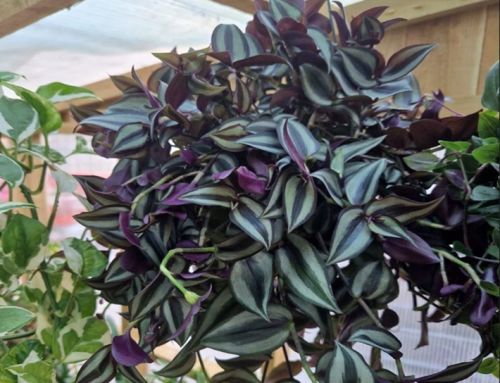Planting a Shady Garden.
If you were to ask anybody what he or she aims to create when gardening, I am sure the majority would have the same answer; they strive to create a vibrant, sunny garden full of bright, happy flowers. The focus is always on the bright and sunny, and many feel defeated if the only outdoor space that they have is in the shade. Whether high walls and fences create that shade or large trees, there is no reason why a shady garden cannot be as showy as a full sun garden, albeit in a more subtle way. The incredible textures, colours and nuances cannot be matched by a sunny garden, and they can feel so much more serene. You see, when it comes to gardens it is not always about the bigger picture it is also about the finer detail. By taking a few points into account then there is no reason why a shady garden should be seen as a challenge. With a little bit of planning and careful planting along with getting to know your garden you can create a serene and inviting haven, that can be just as colourful as any other garden.
Know Your Garden
It is a good idea before you start planting haphazardly to map the area that you intend to plant. If you can work out exactly how much shade is in each part of the garden then you can ensure that the correct plants are in each area and will be getting the right amount of light to allow them to thrive.
Light Shade – An area open to the sky but screened from direct sunlight.
Semi-Shade – A garden that may have three to six hours of direct sun during midsummer, difficult to define but generally half sun and half shade during the hours of daylight.
Dappled-Shade – An area where sunlight filters through for example under lightly branched and leaved deciduous trees
Moderate Shade – A site that gets 2-3 hours of direct sunlight at midsummer.
Full Shade – An area that receives very little sunlight, usually a site under dense tree cover, hedges or in the shadow of a large building.
Once you have established how much shade and sunlight you have, the next thing to consider is whether you have damp or dry shade. Do not be put off by the factors that you have to take into account, once you know what you have it just makes it easier to decide what to plant. By simply digging in organic matter to improve the soil structure and mulching will help retain moisture in dry areas will help.
Plant Choice
A typical shady area would be populated with Hostas and Ferns but Astilbes, Digitalis, Pulmonaria, Hakonechloa, Alchemilla, Euphorbia and Lamium will do just as well and this is just touching on a few of the favourites. White and silver shade loving plants look striking in a shady garden whereas they can look washed out in a fully exposed garden. By sectioning or grouping colourful plants together it has a much bigger impact, as one here or there can easily get lost. To create a bit of depth to your garden as well it is always a good idea to plant in height order, starting with your low growing ground cover at the front, then your smaller perennials and shrubs, with smaller trees behind that and then your larger trees. If you have bare walls then consider a climber, most climbers like a sunny site but there are a few that will tolerate shade especially if sited on an east or north facing wall.
Dry Shade
If you have a dry shady area then the following perennials and shrubs are suitable
Perennials – Alchemilla mollis, Brunnera macrophylla, Dicentra, Dryopteris felix-mas, Euphorbia amygdaloides
Shrubs – Cotoneaster horizontalis, Pyracantha, Eleagnus ebbingei, Garrya eliptica, Hypericum calcynium, Osmathus, Chaenomeles superba
Climbers – Clematis armandii, Hedera helix, Parthenocissus tricuspidata, Euonymus fortuneii
Damp Shade
For damper areas then try the following
Perennials – Astilbe, Astrantia major, Geranium sylvaticum, Hosta, Ligustrum ovalifolium, Primulas, Pulmonaria, Thalictrum, Uvularia grandiflora
Shrubs – Aucuba, Buxus, Camellia, Fatsia japonica, Hydrangea, Skimmia japonica
Climbers – Hydrangea petiolaris, Akebia quinata
Tips to lighten a shady area
There are many ways that you can enhance a shady area to lighten and brighten and reflect light, try some of these
- More light – if a tree is blocking out sunlight just removing some of the lower branches will allow more light to come through.
- Brighten area – By adding pale stones and gravel to a planted area this will help reflect light, also painting walls and fences.
- Plant choice – Light or colourful foliage plants will add light, whites and silvers can look quite striking.
- Texture – Mixing different leaf shapes, so having some Ferns, Hostas and Grasses produce varying textures and adds movement, add to these some flowering perennials to delight the senses.
- Lights – There is an abundance of garden lighting available to add ambience to a shady area, solar lights will not work well as they will not get enough sunlight to function, but there are many low voltage and waterproof options available.
Enrich your outside area by creating a focal point, by placing a seat or bench you are inviting yourself or a visitor to pause and adds a feeling of rest, an opportunity to sit down and look more closely at the area around you and to notice the finer details. By adding a statement piece of art, a sculpture or a large urn, or even an ornamental fire pit adds to the feeling of serenity. Paths are a great addition as they lead you to the areas that you want to view and that deserve close up admiration, the path edges softened with ground cover.
Therefore, although planting a shady area comes with its challenges it has its benefits too. Elderly and heat sensitive gardeners can spend more time doing their hobby of gardening without having the sunlight beating down on them. It permits the growth of plants that cannot tolerate direct sunlight. Walls and buildings offer a backdrop and can be incorporated into your garden design; they also moderate temperature and protects plants from the wind. A large tree that blocks out sunlight can now become a year round structural focal point in your shady garden that enhances and compliments your plantings.






